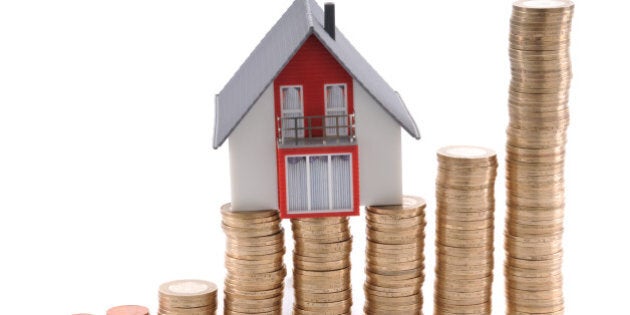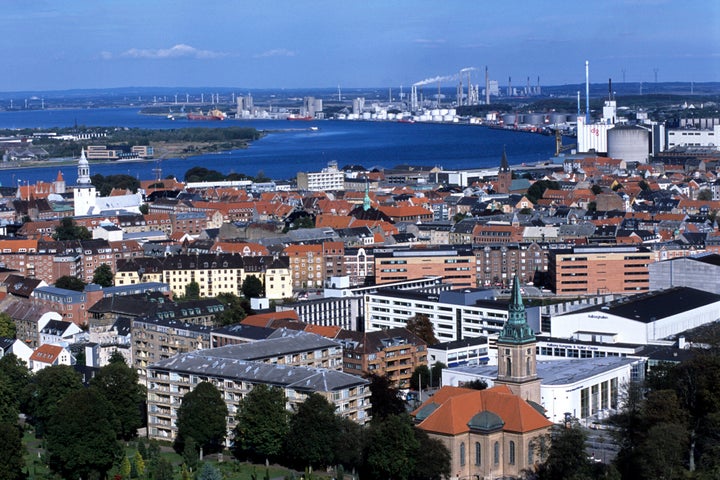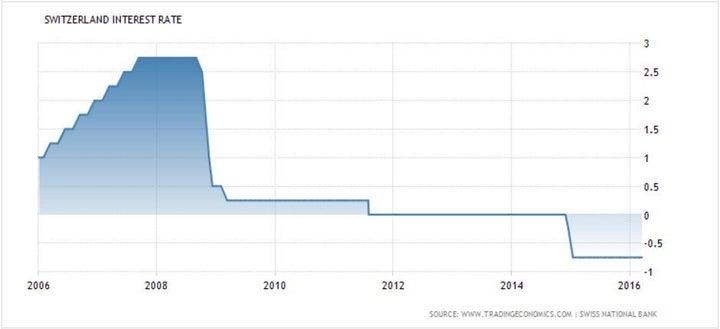
You may have heard about certain countries, mainly in Europe, whose central banks have dropped their interest rates to below zero. But what about mortgage rates that are below zero?
Those are now a reality too, at least for some borrowers in Denmark, the Netherlands and a handful of other countries. Yes, there are homeowners out there who are being paid to hold a mortgage.
The Wall Street Journal recently profiled a couple in Aalborg, Denmark, whose bank paid them the equivalent of C$48 in interest for the first quarter of this year, for owing money on a mortgage.
The total number of people with a negative mortgage rate is unknown, but Realkredit Danmark, one of the country’s largest lenders, says it alone has paid negative interest to 758 mortgage-holders.
But before you hope for something similar to happen in North America, be advised that central bankers in these negative-rate countries are growing seriously worried they’ve created a housing bubble with excessively low borrowing rates.

Why are lenders doing this?
To a large extent, they don’t have a choice. The households that are seeing negative interest have adjustable-rate mortgages, meaning their mortgage rate moves with the central bank’s benchmark interest rate. When benchmark rates fell below zero in some countries, that pulled down mortgage rates for some borrowers below zero as well.
Some banks apparently tried to pretend that this didn’t happen, hoping borrowers wouldn’t notice they’re owed money. Earlier this month, the Dutch consumer financial protection bureau, Kifid, ordered a lender to pay negative interest rates to unnamed borrowers who had taken out mortgages in Swiss francs.
Their mortgage rate was Swiss Libor rate plus 0.7 per cent. When the Swiss rate fell to minus-1 per cent, those borrowers should have started receiving 0.3 per cent in interest back from the lender, the watchdog said.

Will it happen in Canada?
Right now, most analysts don’t expect the Bank of Canada to drop its key lending rate to below zero. It’s currently at 0.5 per cent, where it has been since a round of rate reductions ended last summer.
But Citigroup earlier this year named Canada a top contender for negative interest rates within two years, adding its name to a growing number of experts who think the BoC may not be done slashing rates.
But even if the BoC did go negative, Canadian adjustable-rate mortgages are offered at two percentage points above the key lending rate, so the Bank of Canada would have to drop rates to minus-2 per cent, lower than any other central bank, for mortgage rates to turn negative.

Blowing up a housing bubble?
While central bankers argue negative interest are sometimes necessary to prevent the economy from falling into deflation, some experts are beginning to worry that these negative rates are instead inflating a large housing bubble. House prices in Amsterdam are up 20 per cent in the past year, even though sales have fallen by 2 per cent.
The IMF warned earlier this month that negative rates could lead to a “boom and bust cycle” in the prices of assets, such as homes. “As banks’ margins are squeezed, they may start lending to riskier borrowers to maintain their profit levels,” senior IMF officials wrote in a blog.
Even the head of Sweden’s central bank, the Riksbank, is getting worried cheap money is creating a credit bubble. “It’s dangerous,” Stefan Ingves told the WSJ. “Our households are borrowing way, way too much. It must be reversed sooner than later.”
Also on HuffPost:
